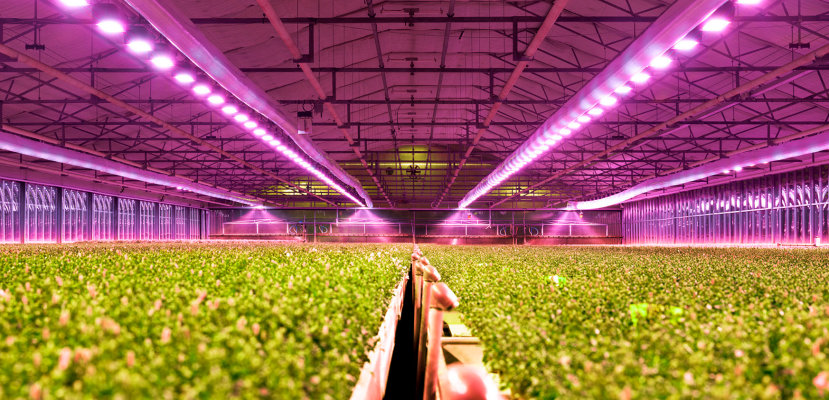With the rapid development of the LED industry, the competition in the general lighting LED market has gradually intensified, and more and more enterprises have begun to develop new products in the middle and high end. Nowadays, the LED application market is broad, and the automotive LED, biometrics and other fields have higher requirements for technology. Due to the uncertainty of the prediction of the future market development trend, the industrialization of new technologies and the research and development of new products, there is a risk that the enterprise has not achieved the expected research and development results, the industrialization of research and development results cannot be achieved, and the market recognition of new products is not high, thus bringing adverse effects on the continuous growth of enterprise performance.
- Industry Competition Pattern
1. Global Pattern
From the perspective of global competition pattern, the pattern of LED enterprise clusters has not changed substantially. Japanese, American and Western European manufacturers are still in the first camp in the industry. They have worked in the field of ultra-high brightness LED for many years, monopolized most of the core technologies of LED industry, and are mainly engaged in the research and development of high value-added products.
Enterprises in South Korea and Taiwan are in the second camp. They usually have a complete industrial chain of consumer electronics, with backlight as the main direction. There is a certain gap in technology between them and the first camp.
The manufacturers in the third camp are mainly from Chinese Mainland (excluding Taiwan, China). With the transfer of LED industry supply chain to Chinese Mainland, the downstream application products and midstream packaging industry of LED industry in mainland China have developed rapidly.
After years of accumulation, some enterprises have penetrated the upstream direction of extension and chip, and have increased their investment in automotive lighting and backlight display by taking advantage of the scale advantage of the terminal consumer market, which has greatly shortened the gap with the first two camps in terms of related technology and product reliability.
2. Domestic Pattern
China's LED industry has experienced a rapid development stage, and has formed a complete industrial chain of "substrate-epitaxial chip- chip-package-application-equipment-material". More than 40 enterprises have been listed in succession.
From the perspective of LED industry chain, the LED upstream chip market shows a high degree of concentration. The LED midstream packaging is in the integration stage where the industry concentration gradually increases. The LED downstream application field shows the characteristics of low threshold, fierce market competition and low market concentration. LED upstream chip market is occupied by leading enterprises with core technology, more independent intellectual property rights and well-known brands, strong competitiveness and reasonable industrial layout, and the market concentration is high.
From the perspective of the market competition pattern of LED general lighting, the current LED general lighting field is mainly divided into three factions: overseas lighting brands, domestic first tier brands, and other domestic brands. Among them, the main advantages of overseas old brand lighting brands lie in the R&D ability of high-end products and years of brand influence; The advantage of domestic first-line brands lies in the extensive domestic sales network and brand influence; The advantage of other domestic brands lies in their manufacturing capacity.

In general, the number of enterprises participating in each link of the LED industry chain and the market concentration are distributed in a pyramid. Upstream substrate production, epitaxial growth and chip manufacturing are technology and capital intensive, with relatively few enterprises participating in the competition and relatively concentrated enterprise resources; Middle stream LED packaging links are characterized by technology and labor intensive, and there are many participating enterprises. In recent years, LED packaging industry has experienced price war due to capacity expansion, some small and medium-sized manufacturers have been eliminated, and industry concentration has gradually increased; The entry threshold of downstream applications is relatively low, and the characteristics of labor intensity are more prominent. The number of enterprises participating in the application is the largest, the industry concentration is low, and the competition is fierce.
China's LED industry can be divided into the Yangtze River Delta Economic Zone, the Bohai Rim Economic Zone, the Pearl River Delta Economic Zone, the Fujian Jiangxi Economic Zone and the Midwest Economic Zone. From the perspective of regional distribution, the Pearl River Delta and the Yangtze River Delta are the regions with the most concentrated LED industry in China. The upstream, midstream and downstream industrial chains are relatively complete, and more than 80% of the relevant enterprises in China are concentrated. They are also the regions with the fastest development of the LED industry in China. The comprehensive advantages of the industry are obvious. Suppliers of LED related equipment and raw materials have settled in these two regions.
- Industry Development Trend
1. Non visual lighting and other innovative applications are emerging
With the rise of plant factory industry, the application of LED lighting in the agricultural field has gradually become the first choice of plant factory lighting. The application of LED in agricultural lighting mainly includes plant production, aquaculture, microalgae culture, edible fungus production, etc. The development trend of LED agricultural lighting technology mainly focuses on the research of light control standard and basic theory of plant growth, obtaining the demand characteristics of characteristic light of characteristic crops, seeking deep regulation mechanism, establishing plant light supplement LED standard and product design specification, etc.

The outbreak of the COVID-19 has stimulated the demand for ultraviolet LED light sources in the sterilization market. The photons of 280nm deep ultraviolet and shorter wave bands have enough energy to directly destroy the deoxyribonucleic acid (DNA) and ribonucleic acid (RNA) that bacteria and viruses rely on to replicate, killing bacteria and viruses. Under the deep ultraviolet light, the chemical bonds in cytosine, which makes up DNA, are broken to form a dimer, which deforms the double helix structure of DNA and prevents the combined replication of base pairs. Therefore, viruses and bacteria cannot reproduce. Compared with other UV light sources such as mercury lamp, deep UV LED based on aluminum gallium nitride (AlGaN) material has the advantages of solidity, energy saving, long life, mercury free and environmental protection.
At the same time, the unique advantages of deep UV LED, such as small size, environmental protection, pollution-free and portability, have expanded its application in consumer electronic products, such as the disinfection module of white household appliances, portable water purification system, mobile phone sterilizer, etc., thus showing a broad market prospect and becoming a new direction and hotspot of LED technology development after visible light lighting.
2. Industry policy driven trends
At present, the LED industry has received high attention in China. The state has given policy support in many aspects, such as industry standards and technology. It has successively formulated the Fourteenth Five Year Plan for China's National Economic and Social Development and the Vision for 2035, Made in China 2025 and other industrial policies conducive to industrial development, which greatly boosted the confidence of industrial development and laid a solid foundation for the sustainable and optimal development of the industry.
As the national investment in LED semiconductor field increases year by year, it will promote the development of various subdivisions of LED industry. LED semiconductor general lighting stock market will accelerate to the direction of high light quality, high energy saving, high reliability and intelligence. In the field of automotive LED, the rapid increase in the market share of domestic new energy vehicles has brought huge market opportunities for domestic automotive LED. In the display field, the penetration rate of Mini backlight will increase significantly in the next 2-3 years; Mini Direct Display will accelerate its market expansion in business display fields such as conference rooms, film screens, film and television shooting; Micro LED, as a hot field of core technology innovation in LED industry, is expected to achieve rapid development in the process of marketization.
3. Health lighting, intelligent lighting and other needs drive technological innovation
In recent years, the popularity of LED lighting products and the extensive controversy over LED blueness have drawn much attention to the concept of health lighting. The concept of health lighting mainly refers to the lighting technology, lighting form, lighting facilities and use methods that have beneficial effects on people's physical and mental health needs such as vision, vision, physiology and psychology. Compared with traditional light sources, LED has more advantages in the control of stroboscopic hazards, color reversion and other aspects, as well as more energy conservation and environmental protection. As an artificial light source for health lighting, LED lighting will be the best choice.
At present, the main technical focus of health lighting is to make the spectrum of LED light source as close as possible to the solar visible spectrum (similar to sunlight), reduce the relative energy of blue light, and prevent the harm of blue light; Increase the relative energy of red light to promote the physical and mental health of human body. In the future, people's requirements for light quality and light environment will be further improved, and the development of lighting will tend to people-oriented lighting (or human factor lighting). The people-oriented lighting refers to the reasonable and scientific design and intelligent control of the time cycle, lighting intensity, spectrum, light distribution and other characteristics on the basis of meeting the high light quality, so as to finally achieve a healthy and comfortable light environment. The realization of human factor lighting depends on the basic research on the visual and innovative impact of light.
The development and application of Internet of Things, big data, cloud computing and other technologies make intelligence an important direction of functional lighting product technology. Intelligent lighting realizes intelligent control of lighting equipment through the control system, including light brightness adjustment, light soft start, timing control, scene setting, etc., to achieve the purpose of safety, energy conservation, comfort and efficiency.

At this stage, the focus of intelligent lighting technology is people's intelligent control, control and management of equipment. With the rapid progress of intelligent lighting technology, the active response of lighting equipment will be realized in the future, and the data interaction, interaction, experience, personalization and digitization between people and equipment (C2M) and between equipment (M2M) will be realized. The market prospect of high-quality products is optimistic, and full spectrum technology has gradually become a hot spot in the industry.
At present, there are two technical routes for full spectrum LED devices. The first is that LED chips (such as purple light, blue light, etc.) excite polychrome phosphors, which has the advantages of relatively stable output spectrum, high color rendering index, no need for separate design of driving power supply, controllable cost of large-scale production, etc. The market prospect of general lighting requiring high quality is optimistic, and the industrialization of continuous spectrum devices with color rendering index higher than 95 can be realized. The other is the phosphor free technology route, that is, different wavebands and multiple LED device combinations, such as blue, red, yellow, green and blue five color LEDs, are used to synthesize full spectrum LED devices. The peak wavelength can achieve full coverage from ultraviolet to infrared. By regulating the light output of LED devices in different wavebands, we can obtain a spectrum with varied shapes. The problems faced by this technical route include that the luminous efficiency of yellow light, cyan light and green light chips needs to be improved. Due to the relatively narrow half width of the peak value of LED devices, the number of devices needed to simulate continuous sunlight is large. At the same time, the high cost of driving power regulation, white light calibration for lighting output, and the inconsistency of light attenuation of different LED devices are faced. The scale of this technical scheme for general lighting is not yet mature.
At present, full spectrum devices in the market mostly adopt the first technical route, which focuses on the proportion of phosphor and the improvement of the efficiency of ultraviolet chips; The second technical route is based on further improving the efficiency of yellow, green and cyan light. China is expected to take the lead in this field by virtue of its advantages in silicon substrate technology.
Disclaimer: This article comes from Puhua Youce. Reprinted for reference and exchange only. If there is infringement, please contact us to delete it. Thank you.




